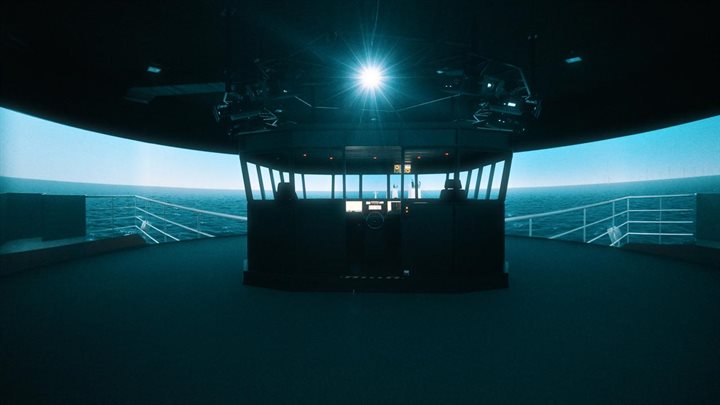Collisions
With the arrival of new wind farms, the risk of collisions with wind turbines from passing vessels or drifting objects is increasing. The fact that the damage caused can be extensive was shown by the accident with the Julietta D in 2022. This cargo vessel collided with the foundations of a wind turbine and a transformer platform: the damage ran into the millions. Rijkswaterstaat wants to prevent collisions wherever possible. So we are looking into how the risk of collisions can be reduced, what the causes are and how to limit damage.

The research topic of Collisions covers three sub-issues:
- Vessel/turbine collisions
- Vessel/vessel collisions
- Human factors
'Vessel/turbine collisions' relates to collisions between vessels and wind turbines. 'Vessel/vessel collisions' relates to collisions between individual vessels (in the vicinity of wind farms). 'Human factors', thirdly, investigates the influence of people on shipping safety: what sort of choices do people make in stressful situations? Are they properly aware of hazards in the surrounding area, and what role do linguistic or cultural differences play?
Research into vessel/turbine collision
In 2020, exploratory research was carried out into the damage that occurs when a vessel collides with a wind turbine. In that way, knowledge could be gained about what happens in the event of collisions with wind turbines. Depending on the type of vessel and how the collision arises, the wind turbine may be undamaged, may buckle, break or even collapse. The impact of environmental factors on the damage, such as the wind, waves and vessel load, will be examined in greater depth in due course. A follow-up study was completed at the beginning of 2024, examining the possible consequences of collision with offshore wind turbines by validating the 2D modeling of failure modes of wind turbines and their foundations and the effect of various detail parameters. These parameters include the ground model, the impact direction of the ship relative to the rotor axis of the turbine, the effects of wind, waves, currents and loads through the turbine on the foundation, the effect of the propulsion load on the ship (due to wind , waves and currents in the case of a floating ship, or by the ship's engine in the case of a sailing ship), and the failure criteria applicable to the foundation of the wind turbine, such as failure due to plastic deformation or failure due to of foldsKnowledge of the consequences of vessel/turbine collisions helps the professionals of MOSWOZ (Offshore Wind Energy Shipping Safety Monitoring and Research Programme) to provide safety recommendations and to improve the protocol for dealing with incidents. Consider, for instance, the possibility of a recommendation to ensure that there are suitable resources to tackle an oil spill. Or, alternatively, a recommendation to evacuate the outside cabins as soon as vessels are in danger of drifting into a wind farm.
Vessel/vessel and vessel/turbine collision bow-tie risk assessments
In 2022, two reports on the risks of collisions in the North Sea were published. The first of these, 'Geactualiseerde BowTie aanvaringen schepen' (Updated vessel/vessel and vessel/turbine collision bow-tie risk assessments), addresses collisions between vessels on the North Sea, not least in the vicinity of wind farms. BowTie Schip-Windturbine aanvaring op de Noordzee’ (Vessel/wind turbine collision bow-tie risk assessments), the second report, addresses the risks of vessel/wind turbine collisions. The 'bow-tie' method is a graphic tool used to simplify understanding of the process of cause and effect. Both reports contain recommendations for management measures, such as improving the tracking of shipping movements around wind farms, emergency drills and the deployment of extra emergency towing vessels (ETVs).
Human factors simulation study
Human factors, too, play a role in the danger of collisions. As on the roads, at sea people sometimes have to make choices in stressful situations. For example, how will a skipper respond to another vessel that comes dangerously close? Under those circumstances, an incorrect choice may lead to a collision. That is why Rijkswaterstaat wants to learn the role that human factors play here. What are the consequences of stress, fatigue and increasing pressure on the choices of vessel crews and their environmental awareness?
A large-scale simulation study is being held in 2024, in which professionals carry out drills in a virtual environment simulating stressful situations in the vicinity of wind farms on the North Sea. The drills follow specially-developed scenarios and are very realistic: it is as if the participants are actually controlling a vessel in a real-life environment. The simulation study is expected to yield valuable insights into the way in which people process information and how they make decisions at sea. In this way it can be determined whether supplementary measures are required and, if so, what they are. These might include extra support for seafarers in the field of education and training or technology.
